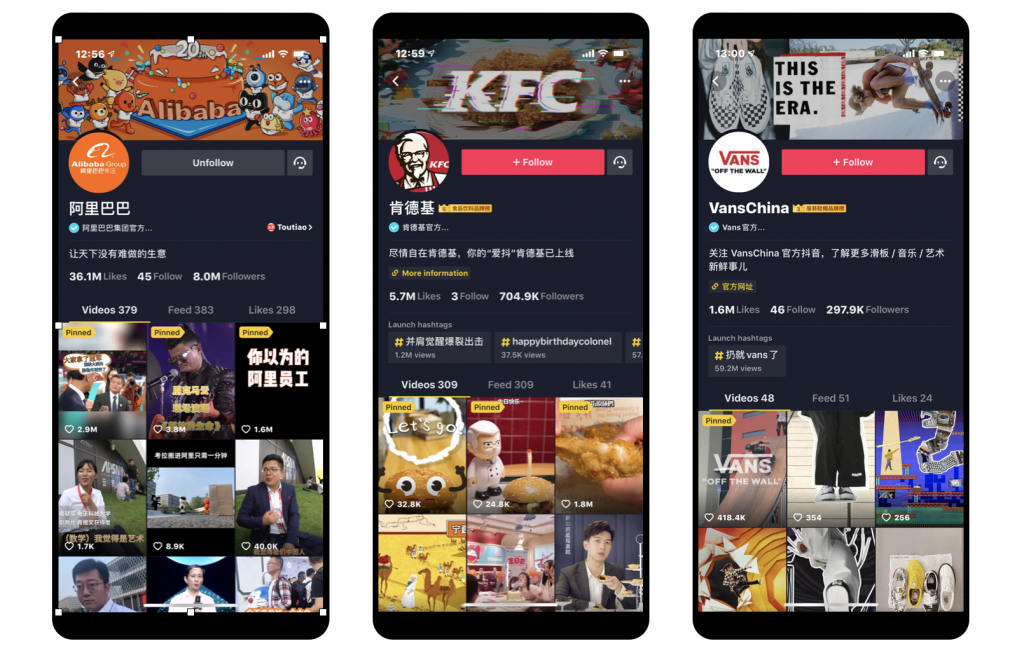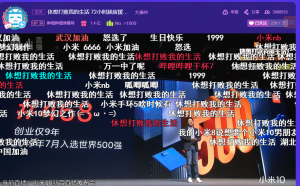
Qumin founder and CEO Arnold Ma
The rapid rise of the short video app TikTok in the U.S. has increased awareness of its Chinese counterpart, Douyin, which share a parent in the Beijing-based Bytedance, arguably the world’s most valuable startup with a recent $75 billion valuation.
The short-video format has taken China by storm, with more than 70 percent of mobile internet users engaging with short videos. Unlike in the U.S., where TikTok is seen as largely the preserve of the very young, with a heavy emphasis on silly content, apps such as Douyin have much broader audiences and offer more for all, including brands.
We caught up with Arnold Ma, CEO and founder of the China-focused digital creative agency Qumin, to discuss how short video is changing China’s social media landscape and the prospects for brands interested in working with these new platforms. Below is an edited transcript of the conversation.
CBI: How is short video challenging the supremacy of WeChat in social media?
Arnold Ma: If your target is Chinese Gen Z and millennials, you need to move on to a different platform than WeChat. Only 15 percent of Chinese teens post on WeChat moments, and the reason for this is that, just as Facebook has gained mass adaptation and become the biggest social media platform on the internet in the West, WeChat is now the single biggest social media platform in China. When that happens, when a platform moves from niche to mainstream, they will lose what made them special for the early adopters — in this case youth. So they’re going to try something else, and that something is short-form video. Chinese people spend 600 million hours per day watching short videos. It’s probably one of the fastest growing formats on the planet.
We think Douyin is here to stay, and it’s growing at a ridiculous rate. And now is the time for brands to take advantage of it. Imagine if a brand built a WeChat presence six years ago or a Facebook presence 13 years ago — today the brand would have the most powerful channel for its marketing. This only happens a certain amount of times in our lifetimes, maybe once every five or six years, where there’s a completely different new social media platform that gains massive traction.
CBI: There’s so much talk about TikTok in the U.S. now, and there’s a sense that Douyin is just the same thing with a different name. Is that a misconception?
Ma: The two are actually very different platforms, even though they’re owned by the same company. They have different content, different functions, and different user behavior. Douyin has many more advantages for brands, whereas TikTok is still a very young platform. Douyin has a fairly affluent demographic, and they’re generally very globally aware and sophisticated consumers.
The first main difference is the content, which on TikTok is very silly, fun video, for now. Our prediction is that TikTok content will move in a direction similar to Douyin. The content on Douyin is very grown up. Whether it’s about entertainment, education or lifestyle, it’s always more mature — less silly and more useful. It makes sense because short video is such a rich format, but it’s only in the last few years that technology, specifically 4G and 5G, has made it accessible enough to reach critical mass on demand.
CBI: How can brands benefit from working on Douyin?
Ma: With the low barrier to entry and high organic reach, it’s the best platform for building brand and customer affinity among Chinese youth right now.
The first advantage is real-time insights. Douyin ranking is awesome. They have different rankings for different categories, such as celebrities, music and brands. The most interesting one for us is the brand ranking. There are different categories of brands that are ranked as well, such as beauty, luxury and automotive, so there’s basically a ranking for every category. And some of the factors that go into the ranking include the number of videos released by the brand, video views, and of course engagement with those videos: shares, likes, and comments. So there are a lot of uses for this: you can see what other brands are producing, you can test and learn from them, you can see which celebrities are popular and with what types of videos…. There are endless possibilities.
Next is social commerce. This is so much more than what is available on Facebook and Instagram. On Western platforms I oftentimes feel like social commerce is just an afterthought. Whereas on Douyin it’s completely different. Social commerce in China is much better at integrating the content with the platform.
There is a new feature that’s being tested by Douyin, using facial recognition technology with AI search. You click on a search icon, which automatically goes to a face that it detects, and you can then search for the face, or you can search the outfit a person is wearing and buy it in the video through a pop-up that pulls up from the bottom of the screen.
Brands need to understand that during the early days of a platform like Douyin, they will do their best for great content to win without alternative interests such as pay-to-win. A social media platform in this early stage is at its most user-focused and content neutral. It’s also the very best time to start building an audience, and on Douyin, where content is pushed by AI, even if you don’t have a following, if your content is really good, it can still get loads of traction, just through the nature of the platform. There is so much opportunity to create good content on Douyin, and the platform is really hungry for a certain type of content: less imitation and more creation.

Douyin offers official accounts for brand to reach China’s Gen Z and millennial consumers
How should brands aim to reach consumers on Douyin?
Ma: It’s important to integrate your branded account through both organic and paid. You need to have a good organic strategy because that’s the best way to reach your audience and it’s the cheapest way as well. Because you can get organic traction and it’s not pay-to-win, you can start off with organic to test the platform, whether it works for your brand and your audience, and if you start to see organic traction you can then spend money to get paid traction on the back of that.
People don’t realize which videos are brand content on Douyin because they are so tailor-made for the platform, and with paid you don’t have to select an audience. For example, after watching a fitness video, a branded supplement video will follow, also done in the format of a user video. The content is so integrated into user feeds that you barely notice when there is an ad.
Which brands are leading the way on Douyin?
Ma: The traditional luxury brands are doing very well, like Chanel and Dior, and also the automotive brands, Range Rover/ Land Rover, some Chinese brands and the makeup brands, such as L’Oreal. Most of the most popular brands in China will have a strong presence on Douyin.
What some of the key differences in the ways e-commerce is integrated into Douyin vs. TikTok?
Ma: On TikTok, you can’t have e-commerce or branded accounts right now. But on Douyin you can have both. You can open a brand account quite easily, and once you open the brand account you can set up an e-commerce account. All you need are ten videos to start your e-commerce account as a brand. [Note: TikTok has just started a preliminary foray into allowing third-party links, but only for select users.]
How do other Chinese short-video apps, such as Kuaishou, compare in terms of brand interest/presence?
Ma: I think Kuaishou is a very under-utilized platform. A lot of brands don’t use Kuaishou because more of the audience is in tier-three and tier-four cities, so they think the audience won’t have as much disposable income as the audience on Douyin. But there’s still a huge middle class in those cities, so if a brand wants to speak to them it will have less competition because there are fewer brands on Kuaishou.






